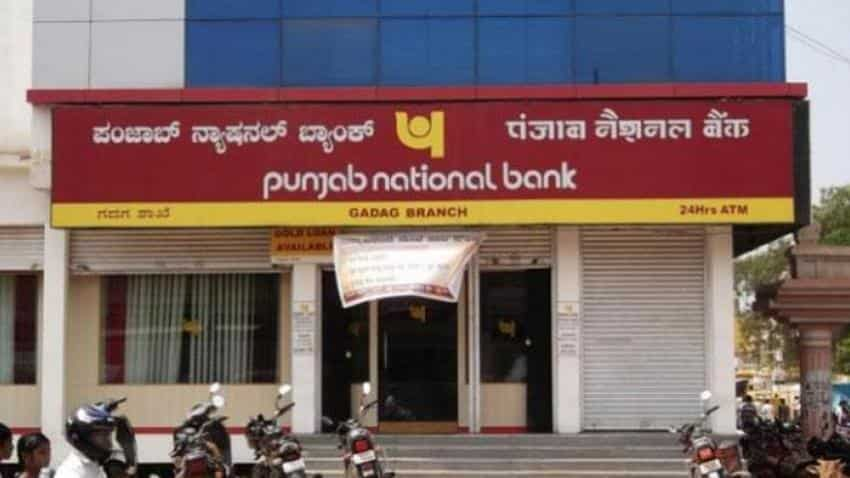PNB fraud: Are public sector banks heading to gallows in India?

By Anto T Joseph
Public sector banks (PSBs) are facing an existential crisis. As skeletons tumble out of the fraud-hit Punjab National Bank, an inevitable debate is underway asking the government to take the stodgy PSBs to the gallows. Do they really deserve a capital punishment?
Scams, big and small, have continued to hit PSBs at regular intervals. If it was a bunch of old economy foxes in 2015 and 2016, and a liquor baron in 2017, a new tribe of diamantaires-turned-fraudsters is writing a requiem for PSBs, now.
Around 80% of the Rs 10 lakh crore of bad loans on the books of Indian banks belong to government-run banks. A recent study said PSBs lost Rs 22,743 crore in banking frauds between 2012 and 2016. Just a year before Nirav Modi bamboozled PNB, Jatin Mehta's Winsome Diamonds used the same Letters of Undertaking route to con banks for almost Rs 7,000 crore. A few months later, a Kolkata jewellery tycoon Nilesh Parekh caused a loss of Rs 2,223 crore to two dozen banks.
ALSO READ: PNB fraud: Will Nirav Modi scam also hurt other known jewellers?
Since July 19, 1969, when the government nationalised 14 largest commercial banks, public money has kept oiling the PSBs. It may have been triggered by two serious concerns then: one, a growing nexus between banks and the industry, and two, a neglect of agriculture. The government wanted to extend banking facilities to the unbanked, and offer credit to the agricultural sector and SMEs, as part of the nation building.
Priority sector lending was given a new dimension in the 1970s. PSBs built a massive branch network and later a network of ATMs in far-flung areas. They have also been in the forefront of mobilising resources from rural areas. The burden of social agenda was largely shouldered by PSBs without any compensation. They contributed their might to India’s inclusive growth.
But in the process, crony capitalism grew bigger. There were regular calls from Delhi’s corridors of power to extend loans to their cronies. A disproportionately large pile-up of bad loans began to strangulate some of the PSBs.
ALSO READ: PNB no one-off! Financial frauds run far and wide in India: RBI's recorded data
On their part, private banks focused on topline and bottomline growth. Priority sector lending wasn’t a priority. They regularly faced a deficit in priority sector loans, but cleverly managed their mandatory numbers by purchasing priority sector lending certificates (PSLCs) from other banks having surplus priority loans, without any real transfer of assets. The advantage is that the seller’s portfolio does not get reduced even after selling the PSLCs while the buyer can bridge its gap in the books by showing these certificates.
It is a fact that new private banks have much higher off-balance-sheet items compared to PSBs. While PSBs follow a transparent system and file an FIR in the event of a fraud, private banks prefer to quietly hush it up. The fresh cleanup operation ordered by the banking regulator may force several private banks to report huge provisions and losses.
The government may want to relook PJ Nayak Committee recommendations to set up a Bank Investment Company (BIC) manned entirely by bankers to run PSBs, and thus reduce Delhi’s interference. But any move to bring down the government stake below 50% may not be advisable.
For PSBs, the mission is still incomplete. What we need today is a flawless banking system that can help India achieve its dream of $5 trillion economy by 2025. It will be imprudent to leave it on the shoulder of private banks alone.
(Source: DNA Money)
Get Latest Business News, Stock Market Updates and Videos; Check your tax outgo through Income Tax Calculator and save money through our Personal Finance coverage. Check Business Breaking News Live on Zee Business Twitter and Facebook. Subscribe on YouTube.
RECOMMENDED STORIES

Senior Citizen Latest FD Rates: Know what major banks like SBI, PNB, Canara Bank, HDFC Bank, ICICI Bank are providing on fixed deposits

Gratuity Calculator: Rs 38,000 as last-drawn basic salary, 5 years and 5 months of service; what will be gratuity amount?

EPFO Pension Schemes: Early pension, retirement pension, nominee pension and 4 other pension schemes that every private sector employee should know

Top 5 Small Cap Mutual Funds with best SIP returns in 1 year: See how Rs 25,000 monthly investment has grown in each scheme

Top 7 SBI Mutual Funds With Best SIP Returns in 1 Year: Rs 25,000 monthly SIP investment in No.1 fund has jumped to Rs 3,58,404
09:54 AM IST











 Public Sector Banks report strong growth with 11% YoY increase in H1 FY 2024-25
Public Sector Banks report strong growth with 11% YoY increase in H1 FY 2024-25  Public sector banks' dividend payout may exceed Rs 15,000 crore in FY24
Public sector banks' dividend payout may exceed Rs 15,000 crore in FY24 PSBs' valuations still reasonable despite 162% jump in Nifty PSU Bank index in less than 2 years: Report
PSBs' valuations still reasonable despite 162% jump in Nifty PSU Bank index in less than 2 years: Report Public sector banks get Rs 15,183 crore following ED action under PMLA: FM Sitharaman
Public sector banks get Rs 15,183 crore following ED action under PMLA: FM Sitharaman  Recent correction may have prepared three PSU bank stocks for a rebound
Recent correction may have prepared three PSU bank stocks for a rebound